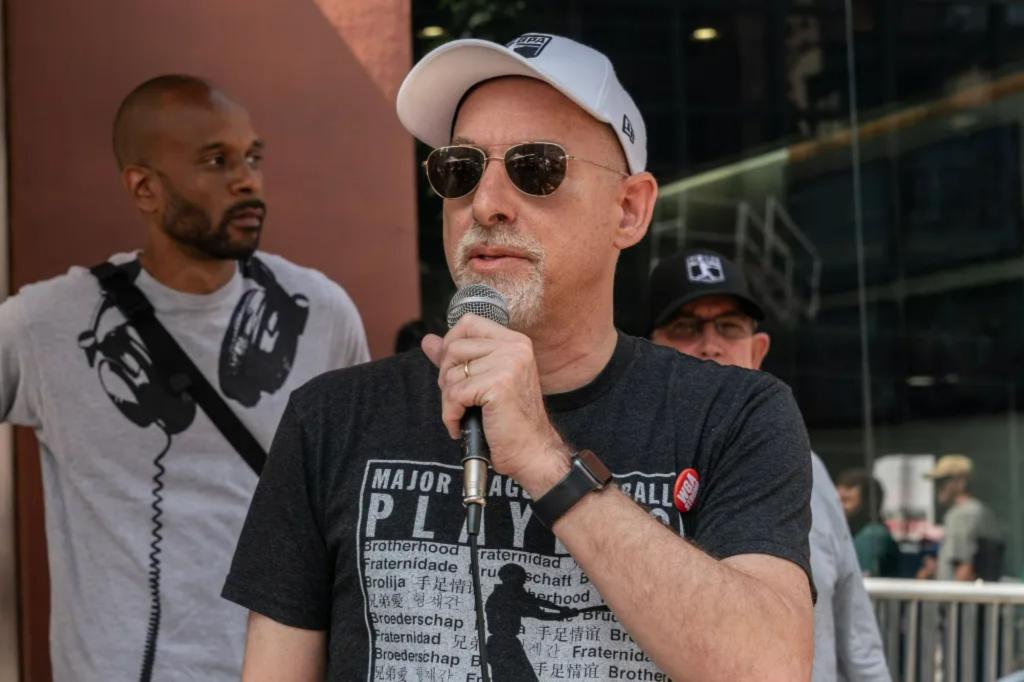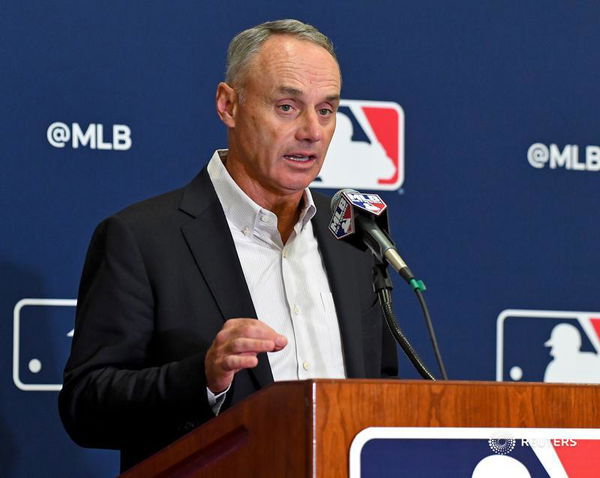

Major League Baseball’s labor peace often feels like a fragile truce. In late June 2025, that truce was put to the test. Commissioner Rob Manfield spoke to an assembly of Atlanta Braves investors. He described the league’s free agency period as a “Bataan Death March.” He also brought up the idea of a signing deadline to create more interest. That was the latest move from the league office, which wants a large-scale change in the sport’s economic structure. However, the MLB Players Association did not overlook it quietly.
Watch What’s Trending Now!
The immediate response was from Tony Clark’s office. Now, a prominent union leader has issued a warning in response. Bruce Meyer, the Deputy Executive Director of MLBPA, appeared on Foul Territory to further explain his reasoning. Meyer, who serves as the union’s top lawyer, directed his comments to the players. He sought to make them aware of the benefits they could lose because of the owners’ proposals. This was the first shot in a war with consequences that will shape the future of baseball. The deadline for the existing collective bargaining agreement is December 1, 2026. A fight is clearly brewing.
Meyer warned players against the most desired prize for owners in the league: a salary cap. He suggested that a cap was supposed to bring labor peace. In fact, it would ensure the opposite. He cited the history of other pro sports as proof of his point. “The salary cap actually guarantees more lockouts, more work stoppages, and more missed games,” Meyer said. “The history in capped sports is once they get you in that system, the owners just keep locking the players out to get the player’s percentage down.”
ADVERTISEMENT
Sports with a salary cap have historically seen more lockouts as owners try to lower players’ percentages during renegotiations.@MLBPA Deputy Executive Director Bruce Meyer warns that the revenue split could shift even more to owners if MLB implements a salary cap. pic.twitter.com/txBCTQ99SZ
— Foul Territory (@FoulTerritoryTV) July 8, 2025
To prove his point, Meyer highlighted the frequent labor disputes in other leagues. He noted that baseball has enjoyed remarkable stability since its last strike. “Baseball since the ‘94 strike has not missed a single game and has had far fewer work stoppages than the other sports,” Meyer explained. “There were four lockouts in the NBA since 1994, two of which missed significant parts of the season, right?” This comparison serves as a powerful warning. It shows players that a capped system often leads to more conflict, not less.
Meyer finished by affirming the players’ position, insisting that MLB’s financial health is stronger than ever. Therefore, a work stoppage driven by owners would be a choice, not a necessity. He stated that the league is making substantial profits, frequently observing reports of record ratings and record attendance. According to Meyer, franchise values continue to rise, and for these reasons, he believes there is no justification for a work stoppage to occur.
ADVERTISEMENT
He made it clear the union is ready to talk. “We will be there with creativity,” he concluded.
ADVERTISEMENT
The ghosts of ’94: The MLB battle reignited
This long-term battle is a result of issues over many decades. In the U.S., MLB is the only major sport that doesn’t have a hard salary cap. Owners put forth a large-scale effort in 1994, which led to a disastrous 232-day player strike. It cost the league the World Series for the first time in 90 years. The players successfully defeated the cap that time. At present, they have no interest in accepting one. The union’s longtime leader, Tony Clark, has said many times, “We’re never going to agree to a cap.”
To strengthen their argument, owners highlight the widening gap in spending on payroll. The league argues this lack of parity is detrimental to competition. In 2025, the New York Mets are spending $323 million on players, while the Miami Marlins are spending just over $67 million. This is what Manfred calls the “massive disparity problem.” Earlier this year, he said, “I am really cognizant of it. And I’m sympathetic to fans in smaller markets who go into the season feeling like they don’t have a chance.”
ADVERTISEMENT

But the players’ union sees the issue differently. The problem, they believe, is not overspending by a few teams. The problem is intentional underspending by many others. The union points out that 16 different teams have won the World Series since 1998. This proves that money alone does not guarantee a championship. They interpret the owners’ demand for a cap as a push for salary control, not competitive balance. It is a fundamental disagreement that sets the stage for a major clash.
ADVERTISEMENT
ADVERTISEMENT
ADVERTISEMENT
ADVERTISEMENT

